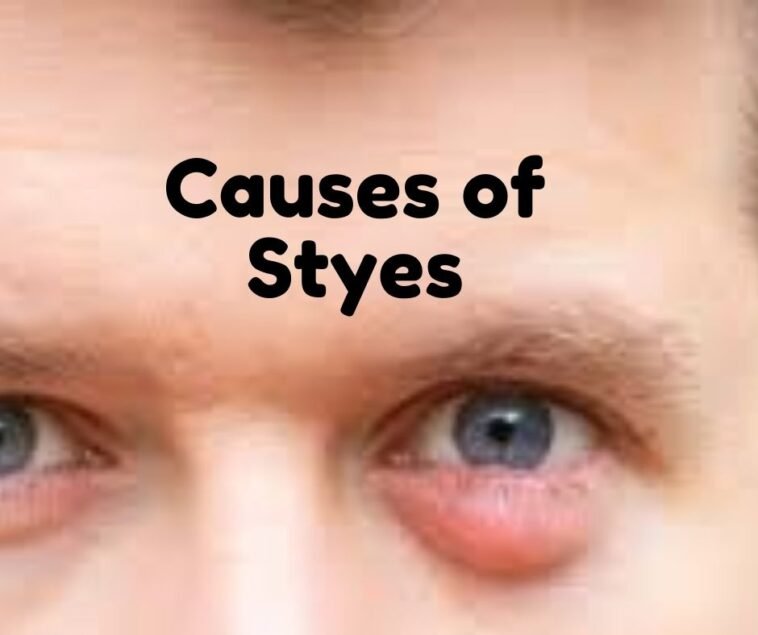Styes is a bacterial infection in the oil gland on the eyelid. The glands can get choked due to dead skin cells. The bacteria get corner inside and cause an infection, resulting in a swollen, painful lump known as styes.
What is a styes?
A styes is a reddish chunk on the outer edge of the eyelid, filled with inflammatory cells due to an infected gland. The medical name of styes is hordeolum.
Symptoms of a styes are-
- eyelid swelling
- yellowish outflow
- irritability to light
- feeling like there’s something in the eye
- a scratchy feeling in the eye
- moist eye
- a coat that forms on the edge of the eyelid
Risk for developing a styes
Mostly the styes are the result of Staphylococcus. Staphylococcus is a bacteria that is inhabited on the skin and generally harmless.
When this bacteria shift towards the eye and get trapped in a gland, they cause an infection.
The eye infection is often caused by carelessness and the use of contact lenses. Actions that expand the risk of contact lens-related infections are –
- badly cleaned contacts
- moving contacts before washing your hands
- using contacts while sleeping
- reusing disposable contacts
- utilizing contacts after they’ve expired
The danger of getting a styes is also increased if you have had it one before. However, they are curable.
Steps to prevent a styes
The chances of getting styes can be lower via the following steps –
- Evade touching or rubbing your eyes.
- Take pills to soothe itchiness from hay fever or allergies.
- Manage blepharitis, rosacea, and seborrheic dermatitis.
- Put contacts clean and disinfected.
- Clean your hands before touching contacts.
- Don’t reuse disposable contacts.
- Scrub your hands with soap and warm water, or use a hand sanitizer that includes alcohol.
Precaution to take during styes are –
- Clean your hands frequently.
- Avoid using mascara or eyeliner.
- Abandon all old makeup.
- Don’t use contact lenses.
The styes are not communicable but bacteria can be transported via infected makeup. Hence, you should never use anyone else makeup or give your makeup to anyone.
How is a styes diagnosed?
The doctor can diagnose a styes by looking at it. No tests are required for styes diagnose.
When to see Doctor?
However, the styes gets healed by itself. But if you facing any of the following issues, you should be considered the doctor –
- your styes doesn’t rise to improve within a few days
- the trash contains a lot of blood
- fast growth
- there’s a lot of inflammation
Growth of inflammation and new signs of infections are indications of enlarging the new infections.
Treatment of styes
Do not try to pop or squeeze a styes otherwise, it can unfurl the infection to the whole eyelid. However, they healed their own in about a week but you can use few topical antibiotics.
A warm squeeze can –
- aid liquefy the dried material in a styes, enabling it to drain
- extract the pus in an outside styes to the exterior where it can come to a head before exploding
- unclog the gland, producing a sewerage route for the pus and detritus especially in inner styes
The American Academy of Ophthalmology suggests using a squeeze for 10-15 minutes three to four times a day during styes.
Massaging the styes after the soft squeeze is helpful to break up the material in the styes to get drain better. Don’t forget to clean your fingertips before doing the massage.
However, don’t forget to consult with a doctor if still you are not feeling better. They can make a tiny incision and removes the debris and pus.
Styes can be very painful, but they healed on their own. A warm squeeze can be helpful to drain the pus and heal quickly.
Source ; Healthline.com



